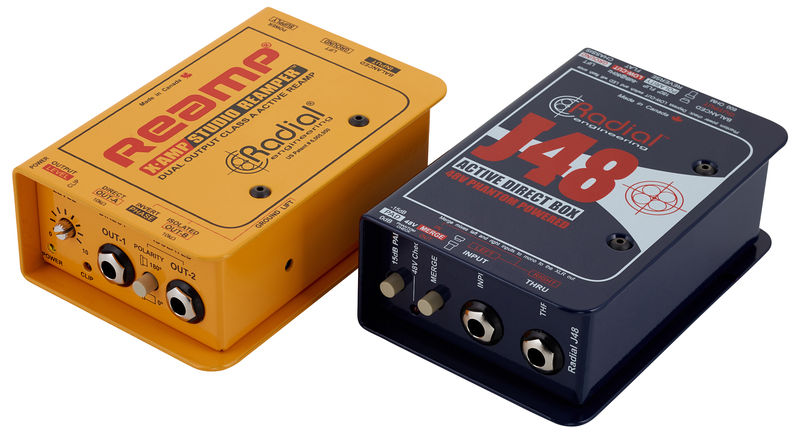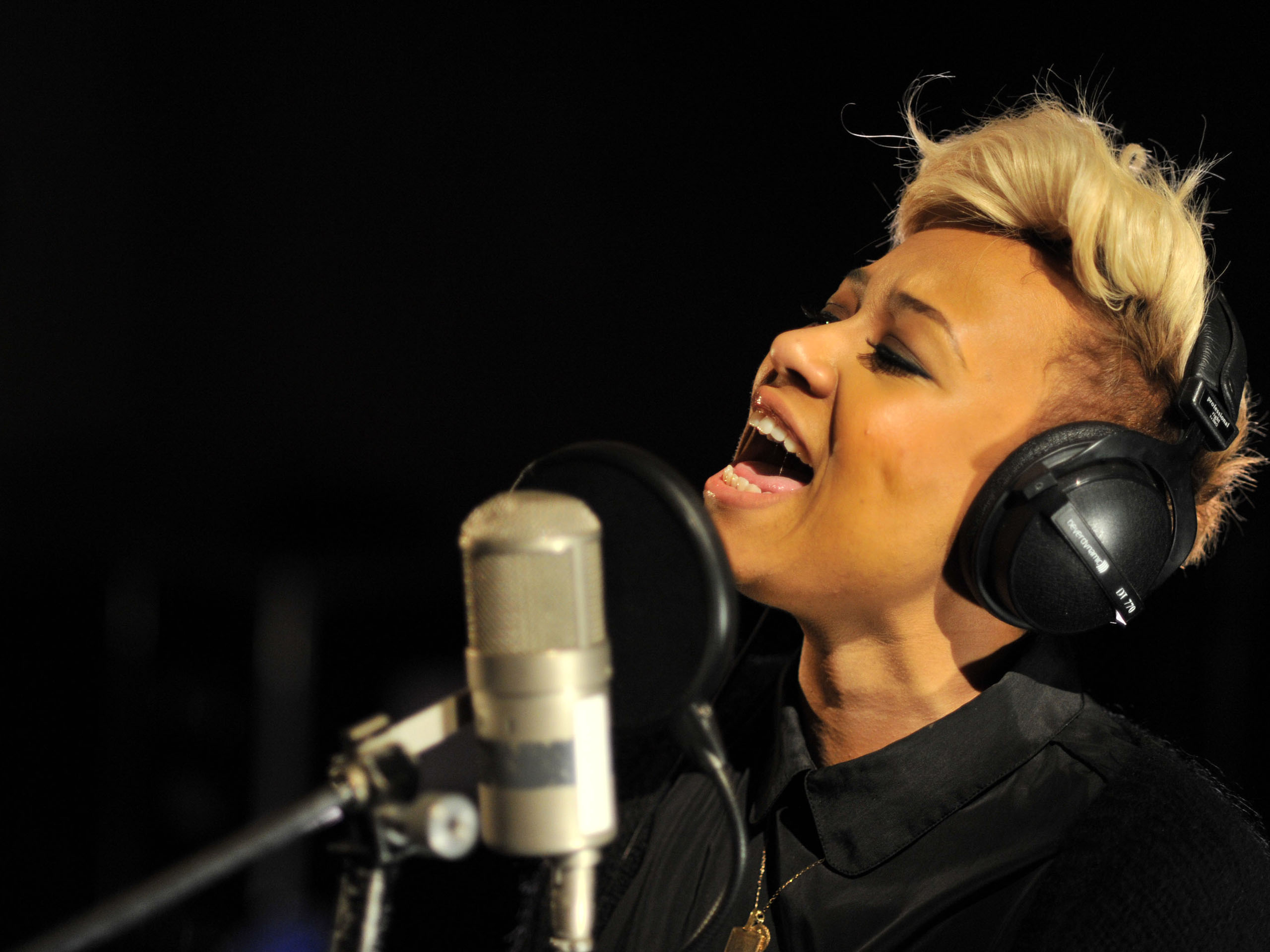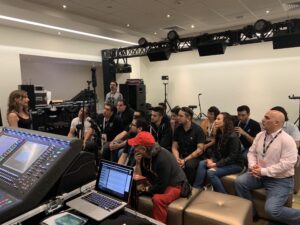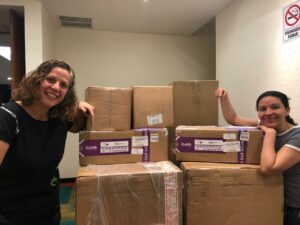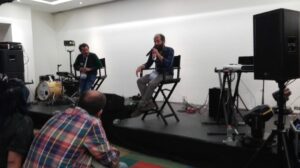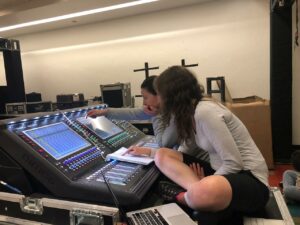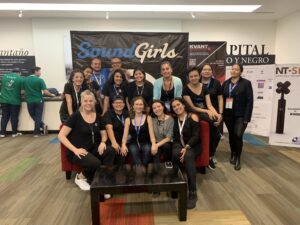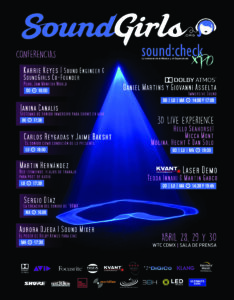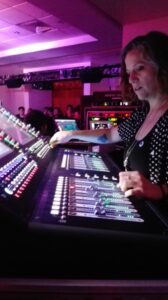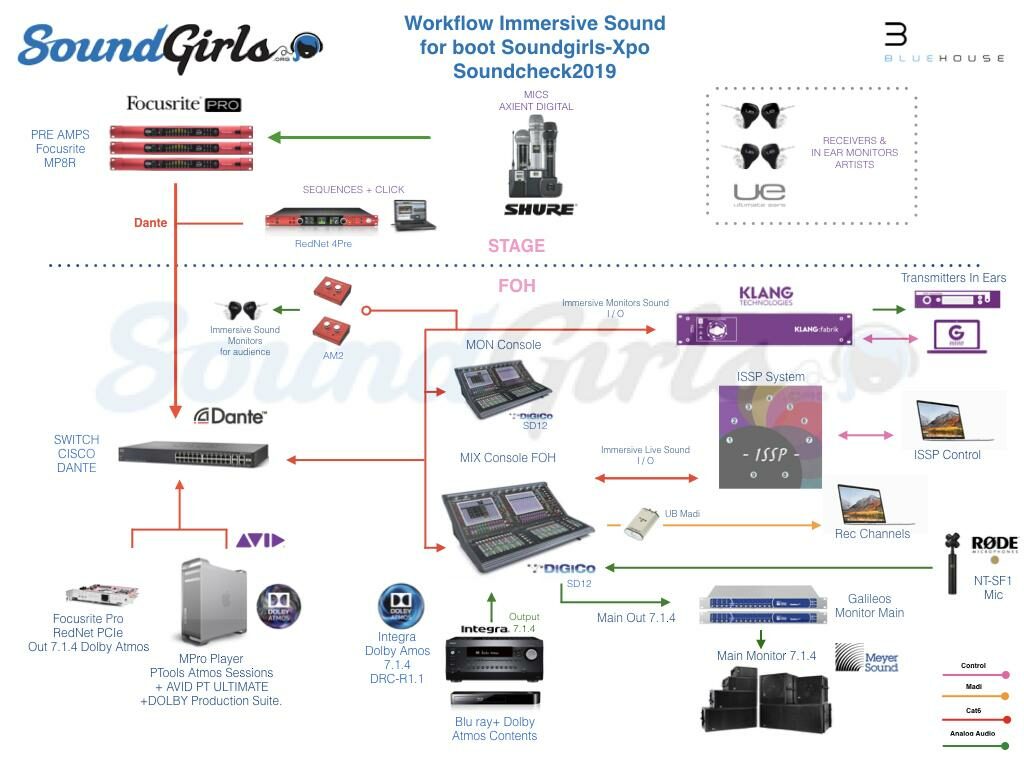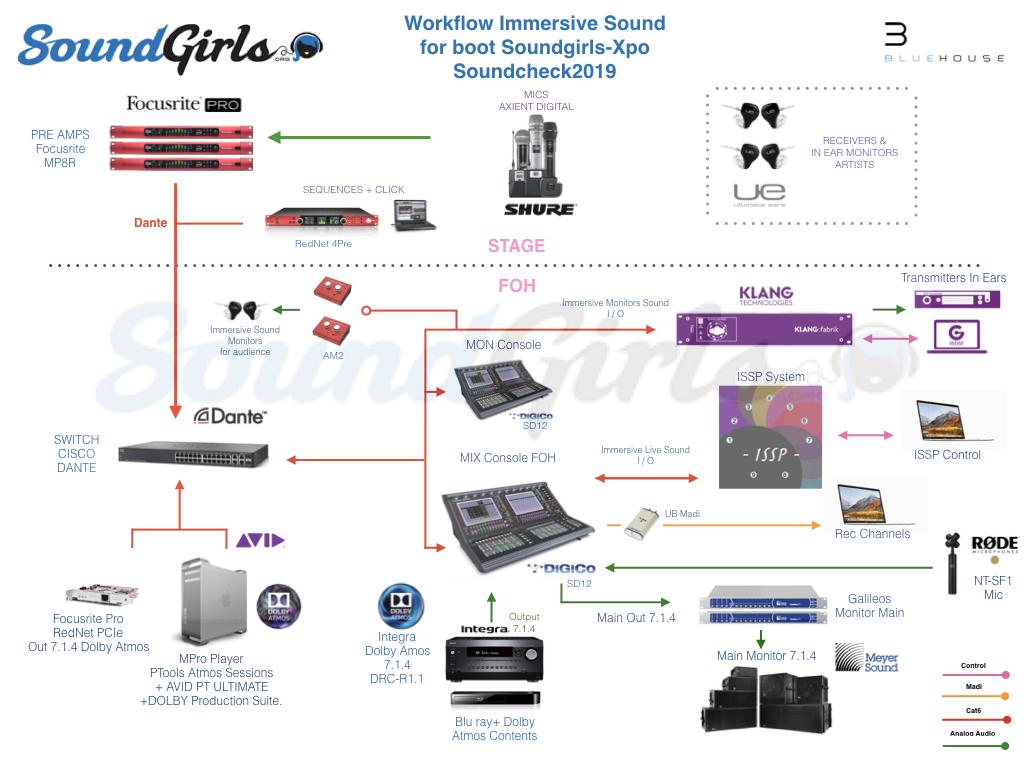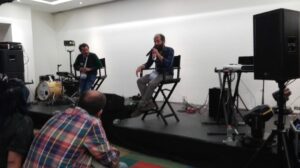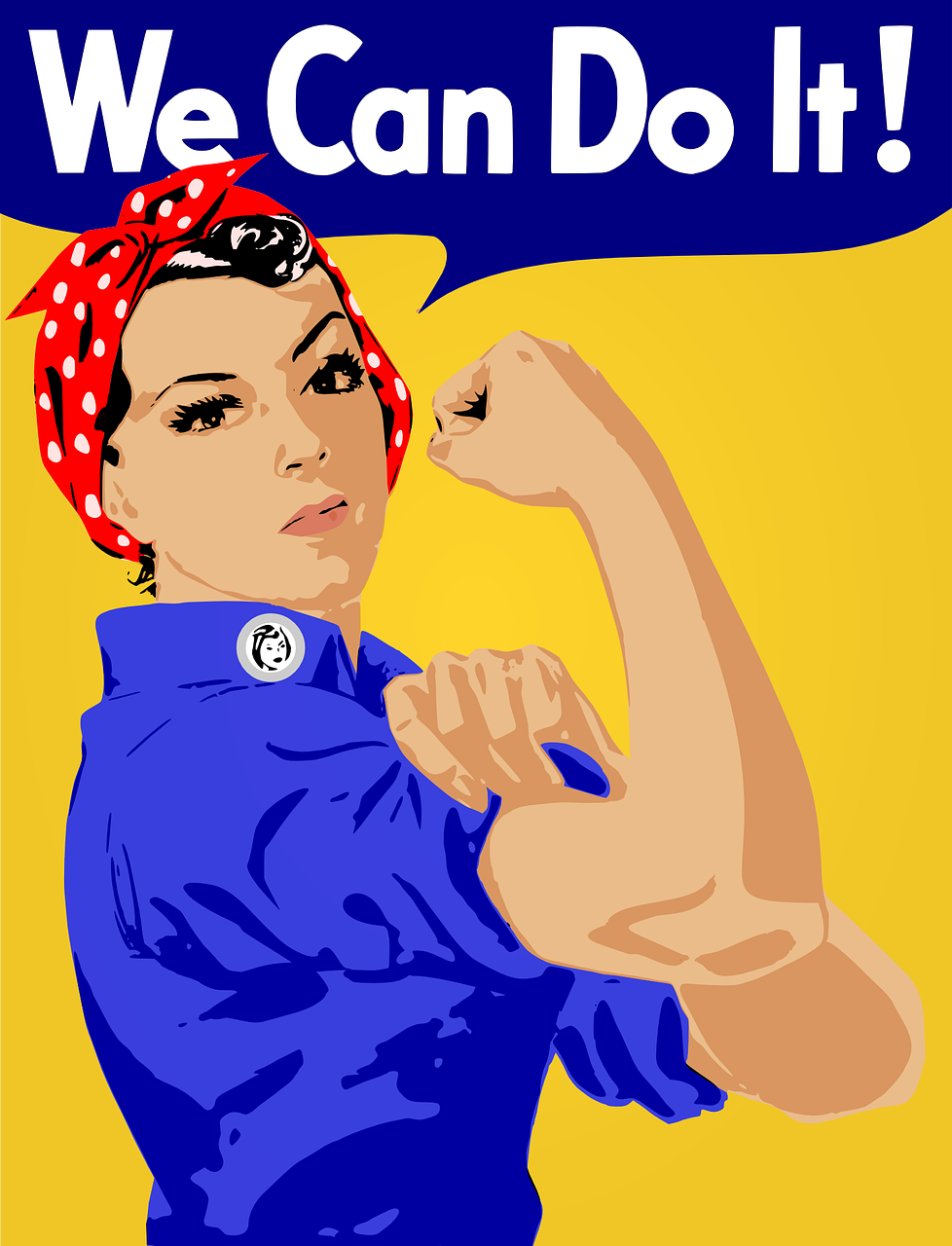
The Power of an All Women Team
I just got home from a load-in that I’ve been dreading for months. To my surprise, I don’t feel exhausted, I don’t have any harrowing stories of woe to share, and I’m not annoyed, frustrated, or angry. Instead, what I feel is proud, accomplished, and satisfied. I’m not immediately sure what is different about this load-in, and then it hits me: There was not one man on this team. The power of the all-women team is real, and I’m about to tell you why.
Yes, I am a feminist. No, I do not hate men. Yes, I work with great guys all the time. So why has my experience with this all-women team been so remarkable? I’m really not sure, and to be honest, I never expected myself to be the person attributing a smooth process to the lack of testosterone in the room, but here we are. Let me start with a little back story on the project.
This load-in was at my resident theatre company. The load-in was for a musical theatre show featuring a six-piece live band on stage. The Sound Designer (also a woman) is a guest, so the rest of the team has been prepping in advance of her arrival. All along, we have checked with her on patching preferences, microphone choices, speaker placement, etc., and she’s been very relaxed and happy with the choices that we’ve made. We haven’t had to deal with any ego or power trip. We haven’t encountered the “only brown M&Ms” on the rider just to make sure we’re paying attention. Easy and efficient is how I would describe the process of advancing this Sound Designer.
Because this show is just a two-hour long concert, we agreed to let the majority of the gear (monitors, FOH console + engineer, microphones, keyboard, etc.) be in the rehearsal room. The intention was that monitor levels, mixes and scenes could be dialed in during the rehearsal process, and save us some valuable tech time. Because all of our gear was sitting in rehearsal during our usual load-in time, we had a finite amount of change over time from rehearsal to stage in preparation for upcoming sound levels time and tech.
The last rehearsal ended at 3:30 pm. My crew, which consisted of the show’s A1, A2, and Assistant Sound Designer, started loading out the rehearsal room at 5:00 pm. We got to the stage around 6:30 pm and began mapping out our setup. Everything must be ready and working by 1:00 pm the next day for the Sound Designer’s designated sound levels time. This process isn’t entirely as cut and dry as it might sound. In addition to making sure everything looks and sounds great on this stage, we have to consider the outdoor theater this show will travel to in two weeks. We need to make sure we have enough resources set aside to support a significant orchestra recording that is coming up at the end of the week and the next musical that will be on this stage.
In addition to the band on stage, we also have two speaker specials hidden in the scenery, 2 Rio stage boxes 50 feet apart, and a wireless microphone rack used for actor body mics, and three of the instruments on stage. We also have eight channels of QLab and an external audio interface. All of this has to be networked in our Dante system. As the load-in progressed, some plans had to change, different runs needed to be made and troubleshooting gear. This was the part when I noticed a difference in many of my past load-ins. These young women, basically fresh out of college, were very smart, keeping all of the pieces tracked through their plans, and working efficiently and calmly.
As a woman working in a male-dominated field, I have been undermined, discounted, and “little-lady’ed” more times than I can count. This regular kind of interaction or expectation has made me permanently defensive, not only for myself but for my fellow SoundGirls in the industry. I have found myself on various calls watching the interaction between women and men, wondering if I’m going to have to drop what I’m doing to come to the defense of another woman who is being railroaded. When I’m juggling all kinds of various technical elements in my brain during a time-sensitive load-in, the last thing I need to be thinking about is whether or not (or how many times) I’m going to have to defend my position to a man who thinks he knows better. Whether or not that situation occurs, the possibility of its existence automatically puts me in defense mode every time.
Here’s the thing about all of this subconscious self-protection: I didn’t know I was doing that until I didn’t have to do it anymore. As I said, I was dreading this load-in. I knew so much was riding on my planning. When my expected stress never arrived at the onset of the load-in, I had to actively think about what was different. All of us on that project were able to focus on the task at hand and nothing else. What a luxury I didn’t know I was missing. Because of this cohesive team and everyone’s smart and careful planning, we walked out of the space at 10:30 pm, hours ahead of what I was expecting. I drove home beaming with pride. Why can’t every job be this way?
The moral of this story is not that we should kick all of the men out of our industry. The moral is that we ALL need to be able to work on an equal and cohesive team. I do not want to see the new generation developing the same defensive complex that I have. To the men reading this blog, pay attention at your next gig. Pay attention to your interactions and the interactions of your fellow male team members. Do you notice a difference in how you interact with the women on your team? Does your voice change? Do your facial expressions vary? What about your body language? All of these things are second nature to all of us, so much I wasn’t even aware I was missing the serenity of working on an all-women team, you might not even be aware that your responses change for no other reason than the gender of the other party. If you see it, when you see it, change it. Make yourself aware. Stopping the cycle starts with you. It’s a fight the women of this industry have been fighting forever. Be an ally, be supportive, be on our team.
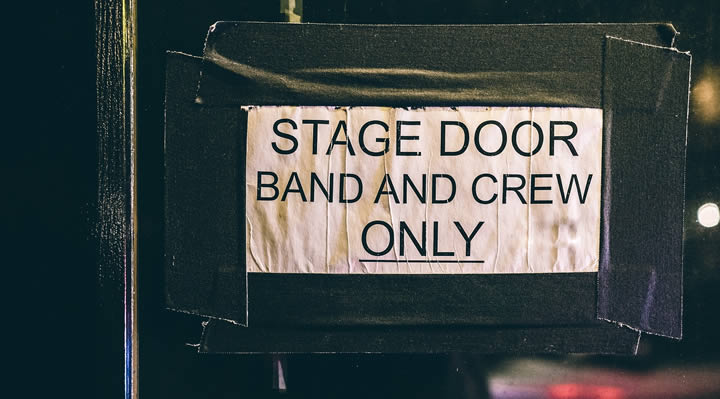


 Industry Insights: Linda Perry, Sylvia Massy & TRAKGIRL On Making Great Recordings
Industry Insights: Linda Perry, Sylvia Massy & TRAKGIRL On Making Great Recordings